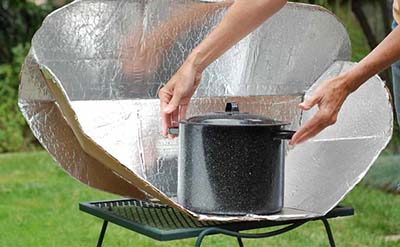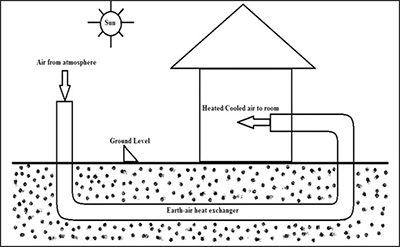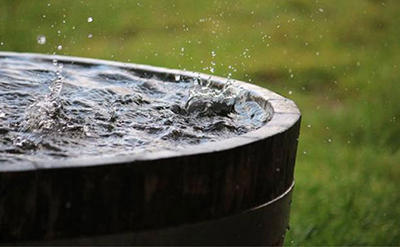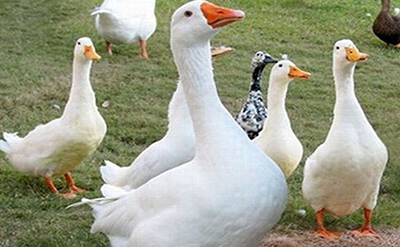Solar Cooking
An Environment-Friendly, Cost-Effective, Nutritious, Tasty, And Hygienic Cooking That Can Cut Power Expenses
Food is the basic need of human beings. Food can be cooked with conventional fuels like wood, cow dung, kerosene, Liquid Petroleum Gas (LPG), and electricity. Solar cooking refers to using the energy of direct sunlight to cook and heat food. The principle of harnessing solar energy to cook food has been known for over one hundred years. The sun provides us with an inexhaustible source of energy. Where the sun shines, you can solar cook. Solar cooking is a lifesaver in developing regions. For the regions of the world facing Deforestation and limited access to Drinking water, solar cooking turns out to be an element precious or the solution. It offers an alternative without Smoke or boiling water in open fires and is safe for cooking. Solar cooking is a concept not limited to cooking food by solar concentrated radiations but also involves sterilization and pasteurization. It has replaced the direct incineration of the biomass materials that cause illness, pain, eye problems, and deforestation

Solar Cooking System:
A solar cooker is a device that utilizes solar energy to cook food. A solar cooker works on the principle that sunlight warms the pot, which is used for cooking food. Now, this warming of the pot occurs by converting light energy to heat energy. Lens and reflectors were used to focus and reflect the solar radiation onto the system. The whole system is insulated to avoid heat loss to the surrounding. The time required for solar cooking is higher as compared to modern technology and hence solar cooking is not widely implemented in household cooking.
Basic Principle:
A solar cooker is a device that utilizes solar energy to cook food. A solar cooker works on the principle that sunlight warms the pot, which is used for cooking food. Now, this warming of the pot occurs by converting light energy to heat energy. Lens and reflectors were used to focus and reflect the solar radiation onto the system. The whole system is insulated to avoid heat loss to the surrounding. The time required for solar cooking is higher as compared to modern technology and hence solar cooking is not widely implemented in household cooking.
Types Of Solar Cookers:
It is a clear fact that there are countless styles of solar cookers in the world and they are continually improved by researchers and manufacturers. Therefore, the classification of solar cookers is hard work. However, it may be asserted that most solar cookers today fall within three main categories called solar panel cookers, solar box cookers, and solar parabolic cookers.
-
-
- Solar Box Cooker:
It is the most common and simple type of solar cooker. A solar box cooker consists of a reflective surface and a transparent glass window to allow the solar radiation to pass through into the insulated box. To maximize solar radiation absorption, the inner part of the box is painted black. Aluminum sheets are used to direct the sunlight to the box. Box Solar Cookers cook food at moderate to high temperatures and often accept more than one pot. They usually cook food of many varieties between one and three hours.- How to Make a Solar box cooker:
There are hundreds of designs to make a solar box panel ranging from simple pizza boxes to wooden frames having a capacity of 2-3 pots. Here we will discuss a simple wooden frame solar box panel.A box-type solar cooker consists of the following components:- Box(B): This is an insulated metal or a wooden box. It is painted black from the inside because the black surface absorbs more heat. The box may be provided with four roll-wheels.
- Glass cover (G): A cover made of two sheets of toughened glass held together in an aluminum frame is used as a cover for box B.
- Plane mirror reflector: A plane mirror reflector fixed in a frame is fixed to box B with the help of hinges. The mirror reflector can be positioned at any desired angle to the box. The mirror is positioned to allow the reflected sunlight to fall on the glass cover of the box.
- Cooking containers: A set of containers made of aluminum and blackened from the outside are kept in box B. These containers are also painted black because the black surface absorbs more heat.
- Working:
The food is cooked in a shallow vessel of the container. The box has a transparent covering of a glass sheet over it. The solar cooker is placed in sunlight and the reflector (plane mirror) is adjusted in such a way that a strong beam of sunlight enters the box through the glass sheet. The blackened metal surfaces in the wooden box absorb infra-red radiations from the beam of sunlight and the heat produced raises the temperature of a blackened metal surface to about 100°C. The food absorbs heat from the black surface and gets cooked. The thick glass sheet does not allow the heat produced to escape and thus, helps in raising the temperature in the box to a sufficiently high degree to cook the food.
- How to Make a Solar box cooker:
- Solar Box Cooker:
-
- Solar Panel Cookers:
Solar panel cooker designs incorporate elements of the box and parabolic cookers. They often have a large reflector area and the cooking pot has some form of enclosure to retain heat. Panel cookers are capable of cooking up to approximately 140 °C (284 °F). They are the easiest style to make and relatively inexpensive to buy.- How to Make a Solar panel cooker:
The most common solar panel cooker is made of cardboard and foil shaped to reflect maximum sunlight onto a black cooking pot that converts sunlight into thermal (heat) energy. A heat-resistant bag (or similar transparent cover) surrounds the pot, acting as a greenhouse by allowing sunlight to hit the pot and preventing heat from escaping. - Working:
A panel cooker, which uses parabolic reflectors positioned above a box-type oven, tends to be smaller and lighter. The cooking pot goes in a plastic bag while it cooks, which acts as a heat trap (like the transparent top on a box cooker).
- How to Make a Solar panel cooker:
- Solar Panel Cookers:
- Parabolic Solar Cooker:
The parabolic solar cooker offers another approach to solar cooking by being able to achieve higher temperatures compared to the box solar cookers and panels, but they require more attention during cooking to avoid overheating the food. They must be redirected to the sun every fifteen minutes or so. This can be done automatically if they are equipped with Solar monitoring. They are also able to fry and grill the food, which cannot be done by the box and panel solar cookers. The parabolic solar cooker uses a bowl-shaped reflector to concentrate light more directly on the pot, usually from the bottom, and generally does not require a Greenhouse to hold the heat. The parabolic name refers to the shape of the curve of the reflector section They require a more frequent reorientation to the sun, possibly every 10 minutes, but they bake more rapidly food at higher temperatures than other solar cookers, often reaching more than 200 °C (400 °F). They also have the ability to fry food. In general, parabolic solar cookers will have to be stirred more than box or panel solar cookers to avoid burning food at the bottom of the pot. They are particularly useful for large-scale institutional cuisine.- How to make a parabolic solar cooker:
A 12 foil-lined cardboard panels, each with a slight bend about three-fifths of the way down, connected circular manner to form a shape similar to a parabola. To check detailed information about how to cut, stick and place different parts of a parabolic solar cooker together - Working:
Parabolic solar cookers use a parabolic-shaped reflector to direct sunlight to a small area to generate heat for cooking. They are able to reach high temperatures, 350 °C (662 °F) or higher, which allows them to be used for grilling and frying. It concentrates the solar energy to a single focal point. Calculations are done to know the focal point.
- How to make a parabolic solar cooker:
-
Fun-Panel Solar Cooker – Article
Solar Cookers – Article
How to Make a Solar Cooker – Youtube Video
Building a DIY Parabolic Solar Cooker – Article
Solar Cooking – Download PDF
Solar Cooking (Whitepaper Explained in Urdu/Hindi) – Youtube Video




